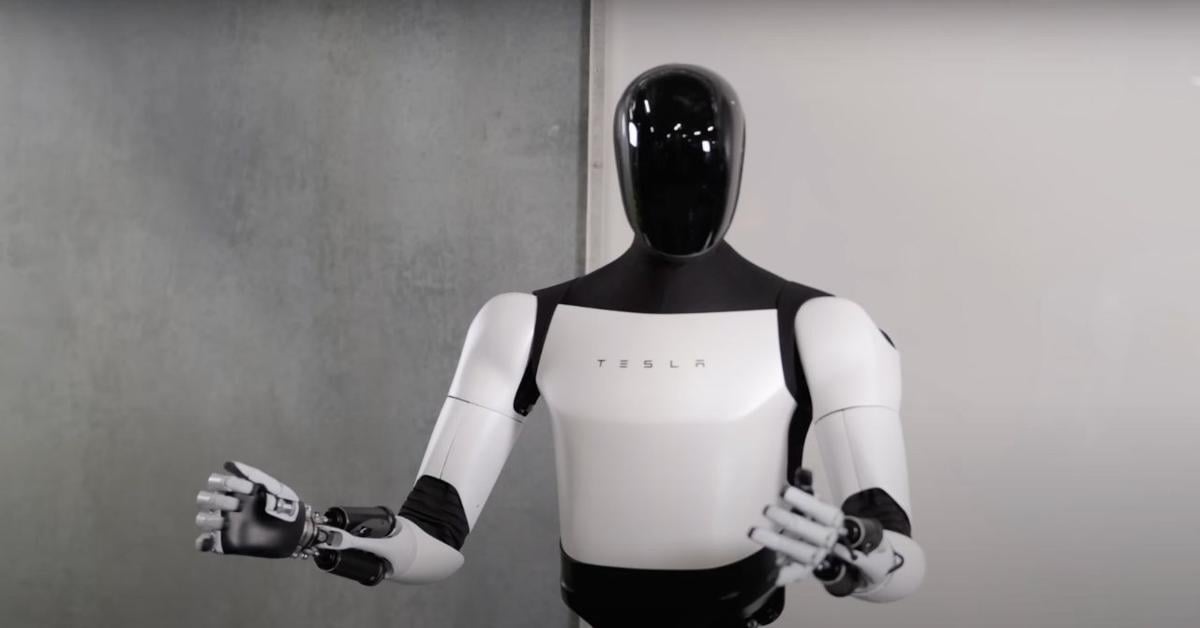
In the midst of a turbulent global trade environment, President Donald Trump has vowed to revive American manufacturing by bringing jobs back home, disrupting supply chains, and imposing tariffs to protect domestic industries. His administration’s vision paints a future where “trillions and trillions” of dollars will flow into building new factories across the United States, ushering in a manufacturing renaissance.
Yet, this vision faces a paradoxical challenge, epitomized by Elon Musk’s staggering $100 billion investment in humanoid robotics — a bet that could either propel or undermine Trump’s efforts to rebuild America’s industrial heartland.
Musk, CEO of Tesla and one of Trump’s closest tech allies and donors, has championed automation and robotics as the future of manufacturing. Tesla’s humanoid robots, which Musk asserts can “produce any product,” are poised to revolutionize factory floors by vastly increasing productivity while reducing reliance on human labor.
This vision of a robotic workforce aligns with Musk’s broader ambitions to advance technology and redefine industrial production, but it clashes with Trump’s promise of bringing back millions of manufacturing jobs that have been lost over decades.

The decline in U.S. manufacturing employment is stark. In 1970, nearly 25% of the American workforce was employed in manufacturing, but that figure has plummeted to roughly 8% today.
The erosion of these jobs is attributed not only to factories relocating overseas in search of cheaper labor but also to decades of automation and technological advances that have allowed factories to produce more with fewer workers. Musk’s investments signal that automation’s role will only accelerate.
Trump’s policy response has been aggressive. His administration has slapped tariffs on imports, sought to renegotiate trade deals, and incentivized companies to reshore production. Commerce Secretary Howard Lutnick confidently touted a future in which trillions of dollars would be poured into new factories and American workers would benefit.
Meanwhile, White House spokesperson Kush Desai emphasized the national security dimension of reshoring, citing supply chain vulnerabilities exposed during the COVID-19 pandemic.
However, Elon Musk’s $100 billion investment in robotics complicates this narrative. The humanoid robots Tesla is developing are designed to perform many tasks currently done by human workers. If widely adopted, these robots could boost factory output exponentially but also threaten to displace millions of workers Trump hopes to see rehired.
This tension between job creation and automation is not lost on economists. Harry Holzer, a Georgetown University professor and former U.S. Department of Labor economist, describes it as a “fundamental conflict.” While Trump speaks of job revival, Musk and other tech leaders pursue automation with enthusiasm.
Musk is not alone. Jeff Bezos, another key figure praised by Trump, has invested billions into robotics startups like Figure, which focus on humanoid robots for manufacturing and warehouse applications. Amazon-backed Agility Robotics also sees the reshoring movement as an opportunity to accelerate robot adoption.
The combined robotics investments from Musk, Bezos, and other tech giants like Meta and Nvidia total well over $100 billion, signaling a dramatic shift in how American manufacturing may function in the near future.
Nvidia CEO Jensen Huang, who accompanied Trump on a recent Middle East trip, offers a more nuanced perspective. He predicts that artificial intelligence and robotics will create “new types of factories,” which will generate jobs in related fields like construction, steelmaking, and skilled trades.

Huang argues that AI will spur productivity growth, enabling firms to expand and hire more workers — though in transformed roles. “New jobs will be created, some jobs will be lost, every job will be changed,” he said.
Still, the net impact on workers is uncertain and likely uneven. Many traditional manufacturing jobs may vanish or become obsolete, while the new jobs require advanced skills and training. The rapid pace of change could exacerbate economic dislocation and inequality unless accompanied by effective workforce development policies.
The political stakes are high. Trump’s manufacturing revival promises depend on robust job growth in sectors that may be fundamentally altered by automation. Public disagreements between Musk and Trump’s senior trade adviser Peter Navarro illustrate the tension within the administration itself.
Navarro champions tariffs and protectionism to revive jobs, while Musk derides such policies as outdated, famously calling Navarro “truly a moron.” Navarro in turn dismisses Musk as merely “a car assembler,” underscoring the divide between protectionist and tech-optimist viewpoints.
Meanwhile, U.S. manufacturers face a severe labor shortage. Studies reveal that many factories cannot operate at full capacity due to a lack of skilled workers, reinforcing the economic logic behind robotics adoption.

For companies, humanoid robots are not just futuristic gimmicks but practical solutions to real-world labor challenges.
The $100 billion bet Musk has placed on humanoid robotics stands at a crossroads. Success could catapult the U.S. into a new era of manufacturing productivity and global competitiveness, aligning with Trump’s vision of American industrial strength — but through an unexpected technological route.
Failure, or widespread job displacement, could undermine the political and social foundations of that vision.
As automation accelerates, policymakers, business leaders, and workers alike face urgent questions: How can the benefits of increased productivity be shared broadly? What policies can ease workers’ transition to new roles? And how will America reconcile its political ambitions with technological realities?
Elon Musk’s robot revolution may well determine the fate of Trump’s manufacturing revival — and the future of millions of American workers caught between innovation and uncertainty.

-1747623652-q80.webp)
-1747904625-q80.webp)
-1747889572-q80.webp)